
Peekaboo
I know I’ve mentioned this before, but it is well worth reminding you about this excellent free app. It is intended to allow health professionals to test high contrast visual acuity in infants and young children as well as older patient groups with special needs (1). We use it all the time in our clinic. An excellent free tool for anyone working with young children.
Peek Acuity
This smartphone app has long been established as an excellent way of screening vision in developing countries. That said, studies have shown excellent results when the app is used for detecting eye conditions in children in a modern, community optometry setting and ‘holds value as a potential office screening tool for detecting vision problems in the most important early ages.’1 This is particularly worth noting in these times of minimised practice visiting. I have calibrated my smartphone ready for use anywhere.
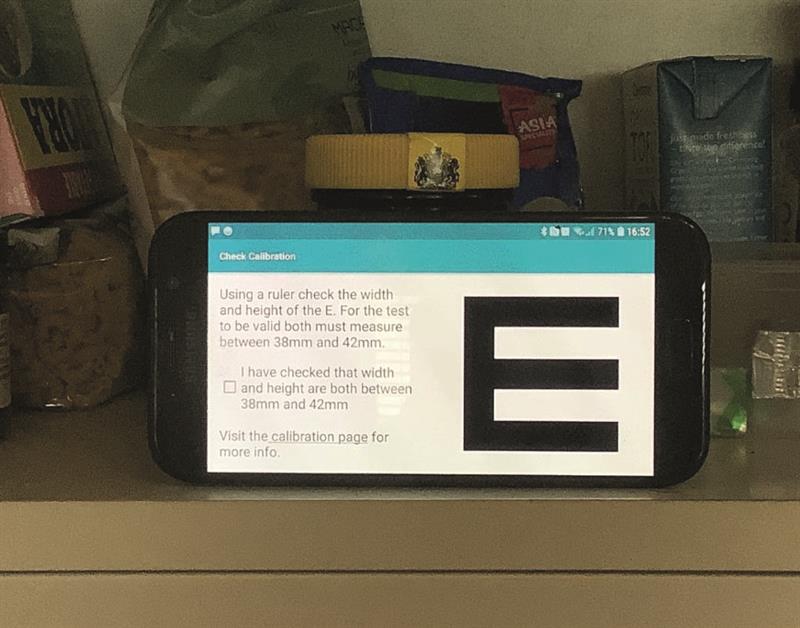 Peek Acuity
Peek Acuity
DigiVis
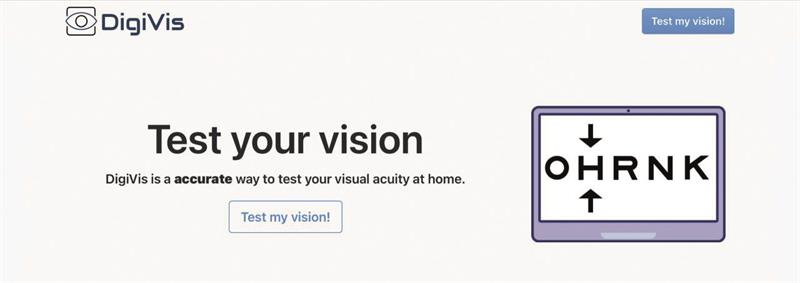
Since the first lockdown, parents in the Cambridge area have been contacted by their child’s school with information about vision screening and how to access the DigiVis test. Using the measurements taken using the app, the screening team can identify the children who need a full eye examination and get this sorted. Consultant paediatric ophthalmologist at Cambridge University Hospital, Louise Allen, has stated: ‘It can be difficult for parents to detect if their child has reduced vision, but early treatment is crucial, making screening really important. Using digital technology will allow us to reach those children whose screening has been disrupted by the Covid crisis, to ensure they don’t miss out.’
Kay Amblyopia Tracker
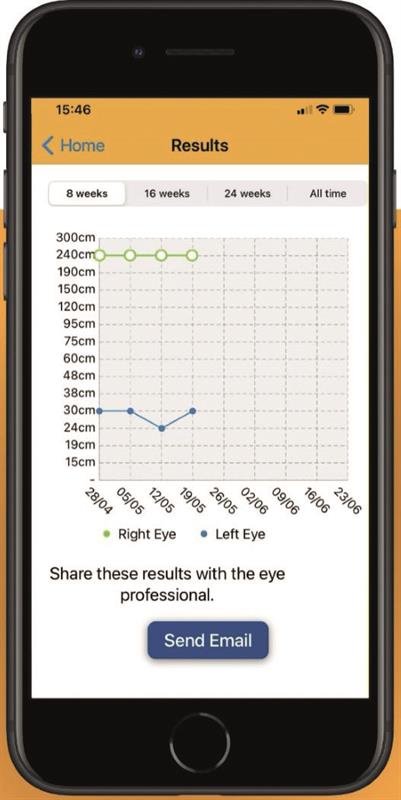
The Kay Amblyopia Tracker allows eye professionals to safely lengthen the time between clinical appointments by giving parents a simple way to monitor changes in their child’s vision at home during their treatment.2 The app is currently only available to patients through their eye care professional, which ensures that home testing is part of ongoing eye care, and can be provided at no cost to parents. Monitoring acuity over time is one of several important tasks covered well by the app (4).
Cradle
This app allows the camera of your device sensitively to compare the retinal reflex of each eye of an infant and so serves as a useful tool for detecting leukocoria (5). Worth a look even if just to access example images in the app.
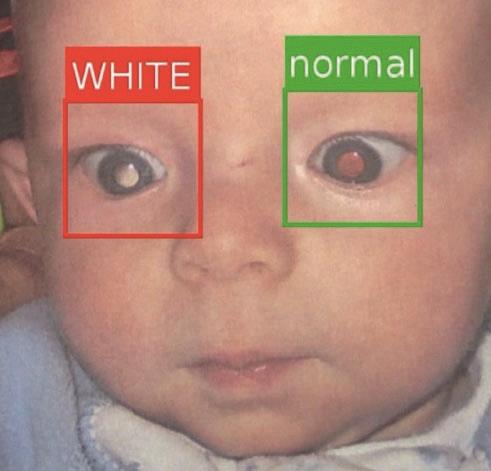 Figure 5
Figure 5
9 Gaze
This free app is great fun (6). More importantly, it allows you to capture the eye position in the main directions of gaze during motility. Useful for remote monitoring or screening for incomitancy.
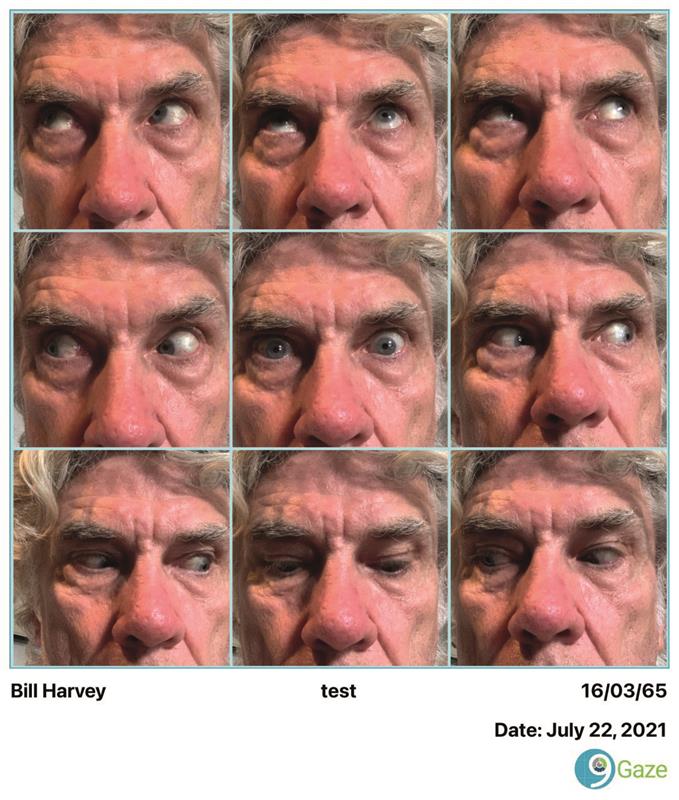 Figure 6
Figure 6
Child Safety Screen
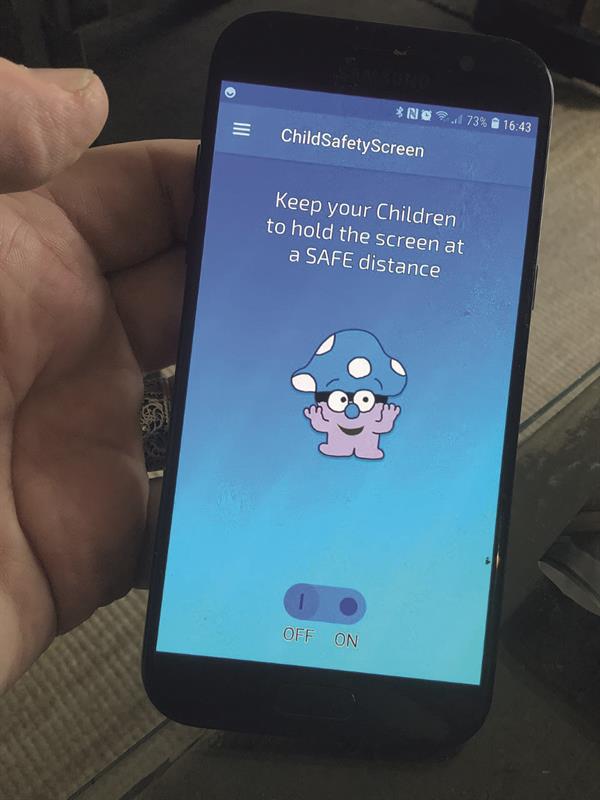
This Android app for Samsung smartphones is one of many apps designed for the more interventional parent (7). It allows the phone usage to be monitored, both in terms of screen time and what the user is looking at; all very Putinesque. I found this app unreliable and noticed that online reviewers had found the same.
Akeso Kid
This is a Chinese app, again one aimed at monitoring a child by
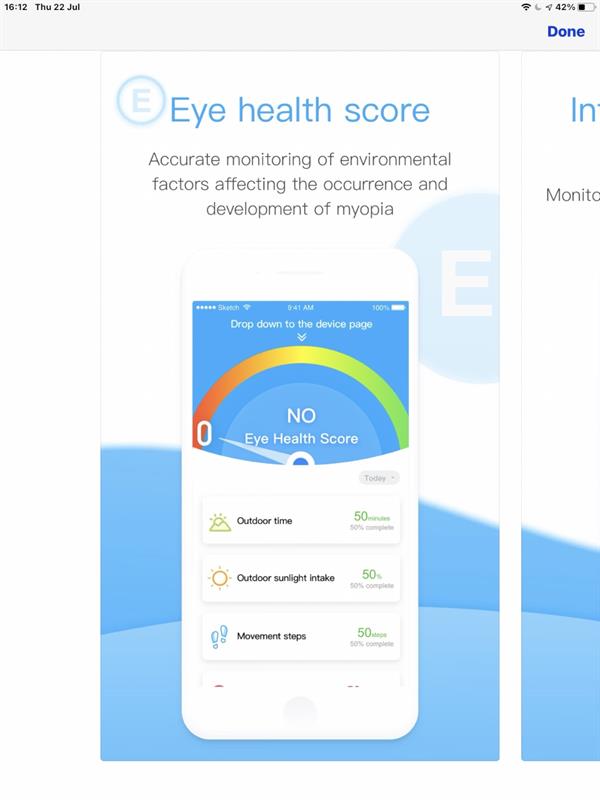 using their smartphone. Its main aim is related to myopia and so records things such as amount of time outdoors and physical activity (8). There is a spectacle attachment that can also transmit viewing behaviour to the app, though this is not available in the UK at the time of writing.
using their smartphone. Its main aim is related to myopia and so records things such as amount of time outdoors and physical activity (8). There is a spectacle attachment that can also transmit viewing behaviour to the app, though this is not available in the UK at the time of writing.
References
- Zhao L et al. Visual Acuity Assessment and Vision Screening Using a Novel Smartphone Application. Journal of Pediatrics, 2019 Oct;213:203-210.e1
- O’Connor A et al. Evaluation of a new method to track changes in vision at home for children undergoing amblyopia treatment. British and Irish Orthoptic Journal, 2021, 17(1), pp. 70–78
- Munson MC et al. Autonomous early detection of eye disease in childhood photographs. Scientific Advances, 2019; 5 (10)
